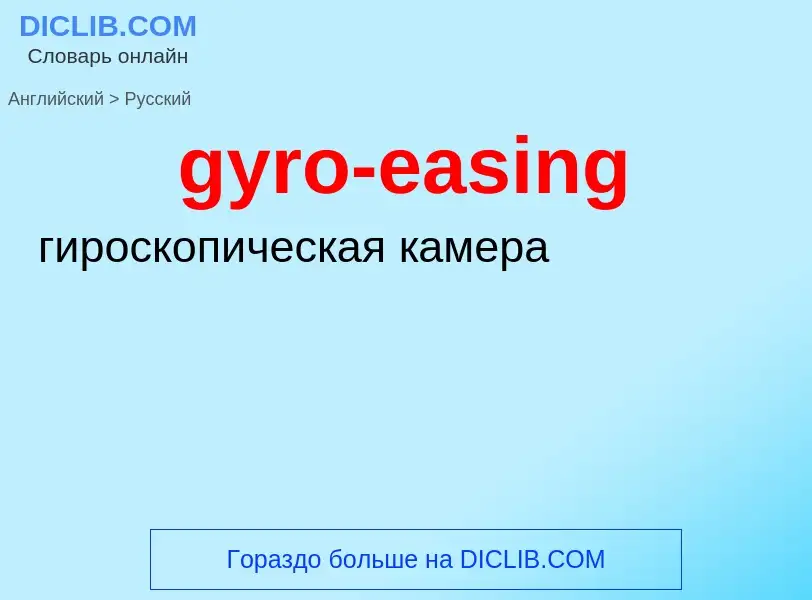Translation and analysis of words by artificial intelligence
On this page you can get a detailed analysis of a word or phrase, produced by the best artificial intelligence technology to date:
- how the word is used
- frequency of use
- it is used more often in oral or written speech
- word translation options
- usage examples (several phrases with translation)
- etymology
gyro-easing - translation to russian
['dʒai(ə)rəu]
общая лексика
гироскоп
сокращение
от gyroscope
of gyroscope
общая лексика
гиротеодолит
Definition
Wikipedia

Quantitative easing (QE) is a monetary policy action where a central bank purchases predetermined amounts of government bonds or other financial assets in order to stimulate economic activity. Quantitative easing is a novel form of monetary policy that came into wide application after the financial crisis of 2007-2008. It is used to mitigate an economic recession when inflation is very low or negative, making standard monetary policy ineffective. Quantitative tightening (QT) does the opposite, where for monetary policy reasons, a central bank sells off some portion of its holdings of government bonds or other financial assets.
Similar to conventional open-market operations used to implement monetary policy, a central bank implements quantitative easing by buying financial assets from commercial banks and other financial institutions, thus raising the prices of those financial assets and lowering their yield, while simultaneously increasing the money supply. However, in contrast to normal policy, quantitative easing usually involves the purchase of riskier or longer-term assets (rather than short-term government bonds) of predetermined amounts at a large scale, over a pre-committed period of time.
Central banks usually resort to quantitative easing when their nominal interest rate target approaches or reaches zero. Very low interest rates induce a liquidity trap, a situation where people prefer to hold cash or very liquid assets, given the low returns on other financial assets. This makes it difficult for interest rates to go below zero; monetary authorities may then use quantitative easing to further stimulate the economy rather than trying to lower the interest rate further.
Quantitative easing can help bring the economy out of recession and help ensure that inflation does not fall below the central bank's inflation target. However QE programmes are also criticized for their side-effects and risks, which include the policy being more effective than intended in acting against deflation (leading to higher inflation in the longer term), or not being effective enough if banks remain reluctant to lend and potential borrowers are unwilling to borrow. Quantitative easing has also been criticized for raising financial asset prices, contributing to inequality. Quantitative easing was undertaken by some major central banks worldwide following the global financial crisis of 2007–08, and again in response to the COVID-19 pandemic.


![Recessions]]
Recessions]]](https://commons.wikimedia.org/wiki/Special:FilePath/FFR treasuries.webp?width=200)




![Wild]] GAK gyroscope mounted on a Wild T-16 theodolite. Wild]] GAK gyroscope mounted on a Wild T-16 theodolite.](https://commons.wikimedia.org/wiki/Special:FilePath/WildT16+GAK sept1989.jpg?width=200)
